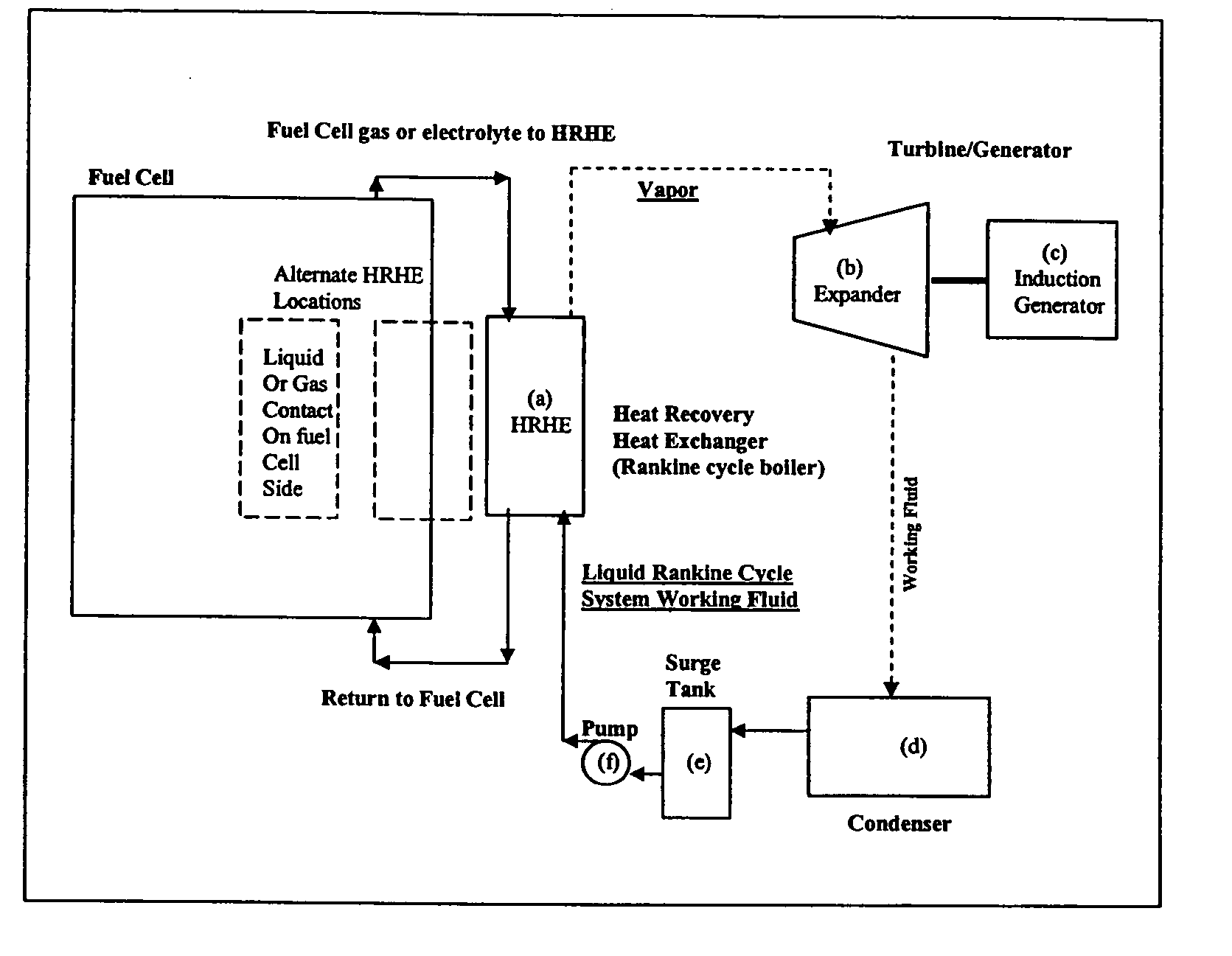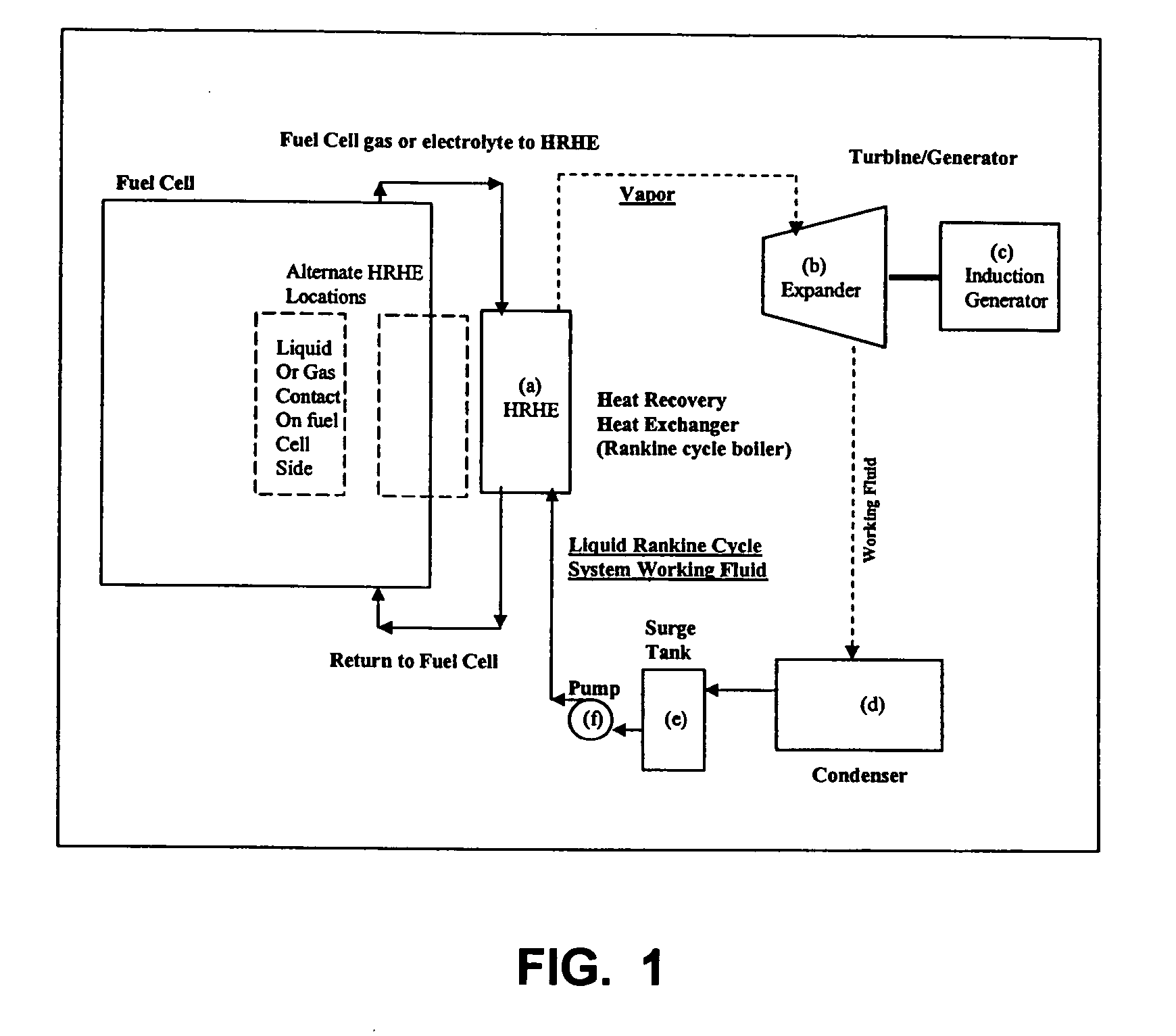Working fluids for thermal energy conversion of waste heat from fuel cells using rankine cycle systems
a technology of working fluids and waste heat, which is applied in the direction of sustainable manufacturing/processing, machines/engines, lighting and heating apparatus, etc., can solve the problems of difficult load matching, environmental risk, and confusion of the efficient operation of the combined heat and power system
- Summary
- Abstract
- Description
- Claims
- Application Information
AI Technical Summary
Benefits of technology
Problems solved by technology
Method used
Image
Examples
example 1
Optimize Cycle Efficiency for a Sub-Critical Organic Rankine Cycle
[0068] In organic Rankine cycle thermal to mechanical energy applications, increased cycle efficiency can be shown to be possible if the working fluid is properly matched to the source and sink temperature. To arrive, at the net work output, the absolute value of the enthalpy gain in the pump due to the increase in pressure in going from the condensing condition back to the boiler condition is subtracted from the absolute value of the difference in enthalpy values at the expander entrance (boiler exit) and expander exit. Dividing “net work output” by “heat input” to the boiler provides the cycle efficiency. The cycle efficiency is strongly dependent upon how far apart the source and sink temperatures are; increasing efficiency with greater temperature difference between source and sink. Moreover, for any given source and sink temperature set, cycle efficiency is increased by minimizing the temperature difference betw...
example 2
Work Output at Cycle Efficiency away from Optimum, Organic Rankine Cycle Process
[0069] One way to assess the relative “goodness” of organic Rankine cycle working fluids is to compare theoretical cycle efficiency. However, many organic Rankine cycle systems utilize waste heat as the driver, hence cycle efficiency is typically not as important as the net work derived (work extracted during expansion less work of the pump). When an organic Rankine cycle is plotted on a temperature entropy diagram, the net work is related to the area under the curve traced out by the Rankine cycle (shaded area shown in FIG. 3). The amount of net work that a fluid can produce increases as the two-phase dome becomes broader (the heat capacity of the fluid increases) and as the critical temperature increases. The temperature versus entropy relationships are plotted for 4-trifluoromethyl-1,1,1,3,5,5,5-heptafluoro-2-pentene ((CF3)2CHCF═CHCF3) and HFC-245fa in Table 1. Table 1 shows that 4-trifluoromethyl-1,...
PUM
 Login to View More
Login to View More Abstract
Description
Claims
Application Information
 Login to View More
Login to View More - R&D
- Intellectual Property
- Life Sciences
- Materials
- Tech Scout
- Unparalleled Data Quality
- Higher Quality Content
- 60% Fewer Hallucinations
Browse by: Latest US Patents, China's latest patents, Technical Efficacy Thesaurus, Application Domain, Technology Topic, Popular Technical Reports.
© 2025 PatSnap. All rights reserved.Legal|Privacy policy|Modern Slavery Act Transparency Statement|Sitemap|About US| Contact US: help@patsnap.com



